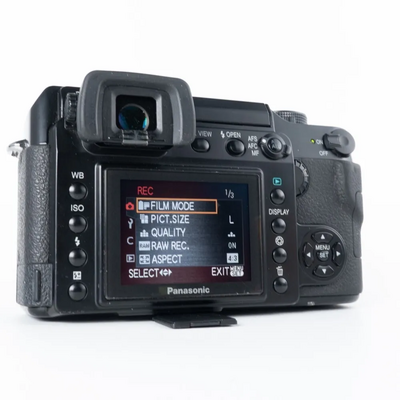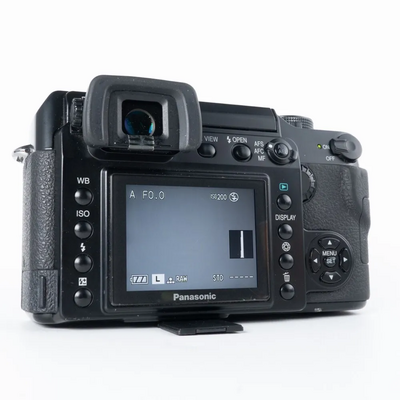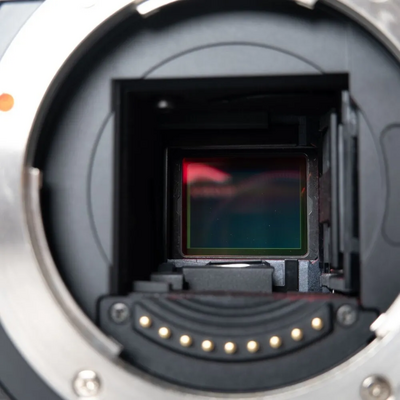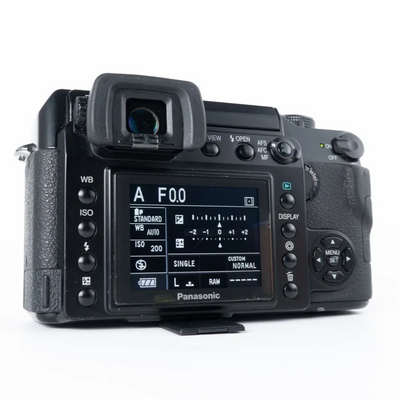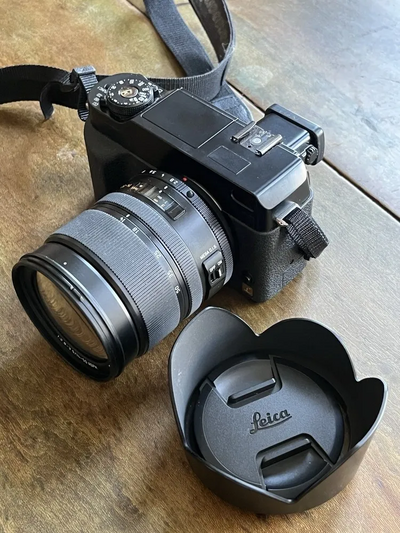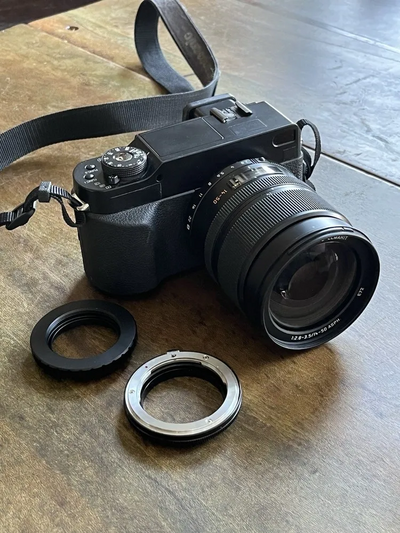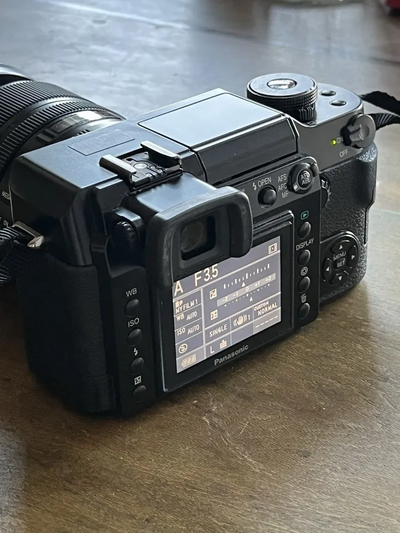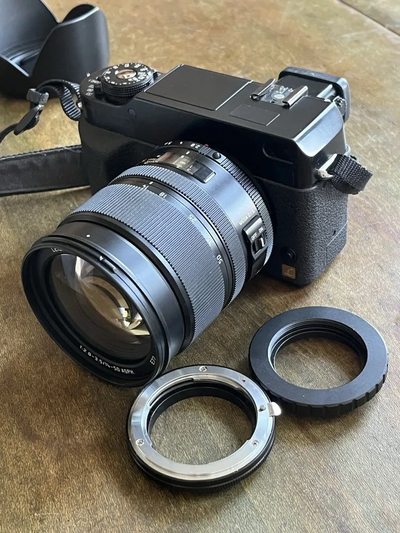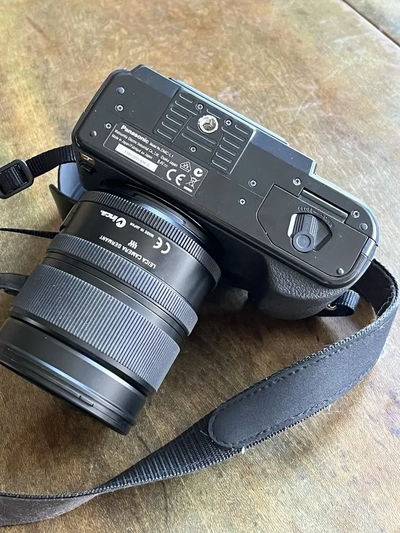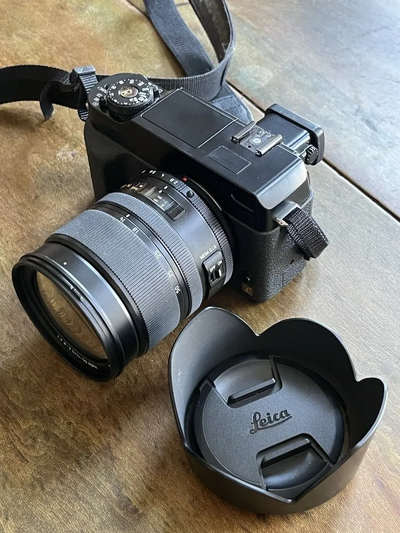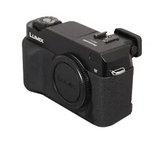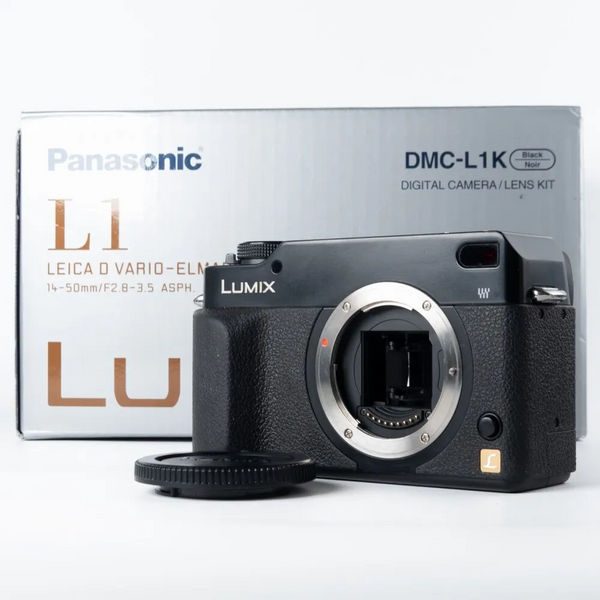
Panasonic L1
| Brand | Panasonic 2006 |
| Model | DMC-L1 |
| Released Year | 2006 |
| Type | DSLR Cameras |
| Series | Lumix |
| Color | Black |
| Status | Discontinued |
Quick view
Overview
The Panasonic Lumix L1 was launched in 2006 as one of the early Four Thirds system DSLR cameras. It features a 10.1-megapixel Live MOS sensor optimized for high-quality image capture and reduced noise. The camera supports interchangeable lenses compatible with the Four Thirds mount, enhancing versatility. It includes an optical viewfinder and a 2.5-inch LCD screen for live preview and image review. The L1 offers manual and automatic shooting modes catering to both enthusiasts and professionals. Additionally, it incorporates image stabilization technology to minimize blurring due to camera shake.
Specifications
| MPN | DMC-L1K |
| UPC | 0037988985784 |
| Model | DMC-L1 |
| Digital Zoom | 4x |
| Battery Type | Lithium-Ion |
| Type | Digital SLR |
| Features |
|
| Series | Panasonic LUMIX |
| Depth | 3.15in |
| Width | 5.74in |
| Item Weight | 18.7 Oz. |
| Height | 3.42in |
| Screen Details | LCD Display-Tft Active Matrix-2.5"-Color |
| Exposure Compensation | ±2 Ev Range, in 1/3 Ev Steps |
| Light Sensitivity | Iso 800, Iso Auto, Iso 400, Iso 1600, Iso 200, Iso 100 |
| Sensor Type | Cmos, Live Mos |
| Max Shutter Speed | 1/4000 Sec |
| Exposure Range | Ev 0-19 (Iso 100) |
| Special Effects | Black & White |
| Camera Flash Features | Af Illuminator, Slow Sync, Flash +/- Compensation, Red-Eye Reduction Flash, Forced on, Auto Flash |
| White Balance | Auto, Colour Temperature Adjust, Halogen (Preset), Flash (Preset), Cloudy (Preset), Shade (Preset), Daylight / Sunny (Preset) |
| Battery Form Factor | Manufacturer Specific |
| Focus Adjustment | Autofocus & Manual Focus |
| Expansion Slot | 1X SD Memory Card |
| Sensor Size | 13.0x17.3mm |
| Display Size | 2.5in |
| Exposure Modes | Aperture-Priority, Bulb, Shutter-Priority, Manual, Automatic |
| Still Image Format | Raw, JPEG |
| Display Rotation | Built-In |
| Screen Size | 2.0".5" |
| Light Sensitivity Max | 1600 |
| Max Operating Temperature | 40°C |
| Maximum Resolution |
|
| Optical Viewfinder Type | Eye-Level Porro Prism |
| Red Eye Reduction | Yes |
| Min Shutter Speed | 30 Sec |
| Display Type | LCD |
| Sensor Resolution | 7.5MP |
| Exposure Metering | Multi-Segment, Spot, Center-Weighted |
| Additional Features | Interchangeable Lenses, Ae/Fe Lock, USB 2.0 Compatibility, Direct Print, With Tripod Mount, Depth-Of-Field Preview Button, Dpof Support, LCD Live View Mode, Resizing an Image, Af Lock, Rgb Primary Color Filter, PictBridge Support |
| Flash Type | Pop-Up Flash |
| Min Operating Temperature | 0°C |
| Viewfinder-Field Coverage | 95% |
| Exterior Color | Black |
| Connector Types | 1X Composite Video Output, 1X Remote Control, 1X DC Power Input, 1X USB |
| Flash Modes | Red-Eye Reduction, Slow Synchro, Fill-In Mode, Off Mode, Auto Mode, Rear Curtain Sync |
| Dioptric Correction Range | -3 to +1 |
| Viewfinder Magnification | 0.93x |
| Camera Type | Digital SLR |
| Auto Focus Type | TTL Phase Detection |
| Viewfinder Type | Optical, Optical (Through-The-Lens) |
| Lens for Sd | Body only |
| Supported Flash Memory | MultiMediaCard, SDHC Memory Card, SD Memory Card, SD Card |
| Continuous Shooting Speed | 3fps |
| Maximum Aperture | f/2.8 |
| Color | Black |
Images
Key Advantages
The Lumix L1 benefits from excellent image quality attributed to its Live MOS sensor. Its compatibility with a wide range of Four Thirds lenses allows for creative flexibility. The optical image stabilization helps produce sharper images in low-light conditions. The camera's solid build and ergonomics offer comfortable handling during extended shoots. Its hybrid DSLR design integrates live view functionality, uncommon in early digital SLRs. Moreover, users can enjoy precise manual controls alongside useful automatic settings for varied shooting scenarios.
Limitations
One limitation of the Lumix L1 is its relatively small sensor size compared to APS-C or full-frame DSLRs, which affects depth of field and noise performance. The autofocus system may be slower and less accurate than modern cameras. The camera's burst shooting speed and buffer capacity are limited by today's standards. It does not support video recording, restricting multimedia use. The LCD screen resolution is modest and may impact image review detail. Lastly, being released in 2006, the L1 lacks many contemporary connectivity features like Wi-Fi or GPS.
FAQ
What sensor does the Panasonic Lumix L1 use?
The Lumix L1 uses a 10.1-megapixel Live MOS sensor tailored for the Four Thirds system.
Is the Lumix L1 compatible with interchangeable lenses?
Yes, it supports Four Thirds mount lenses, allowing users to swap lenses for different photography needs.
Does the Lumix L1 have video recording capabilities?
No, the Lumix L1 does not support video recording.
When was the Panasonic Lumix L1 released?
The Lumix L1 was officially released in 2006.
Does the Lumix L1 feature image stabilization?
Yes, it includes optical image stabilization technology to reduce blurriness from camera shake.
Is the Lumix L1 still being produced?
No, the Lumix L1 has been discontinued.
What is the size of the LCD screen on the Lumix L1?
The Lumix L1 has a 2.5-inch LCD screen used for live view and image playback.
Disclaimer
The content on is provided for general informational purposes only. We do not guarantee the accuracy, completeness, or reliability of any information, specifications, or visuals presented on the site.
is not responsible for any content, images, or data uploaded or shared by users. Users are solely responsible for the content they submit.
We may include links to third-party websites for convenience. We do not endorse or take responsibility for the content or policies of any external sites.
Use of the site is at your own risk. Always verify critical information independently before making decisions based on content from this website.

